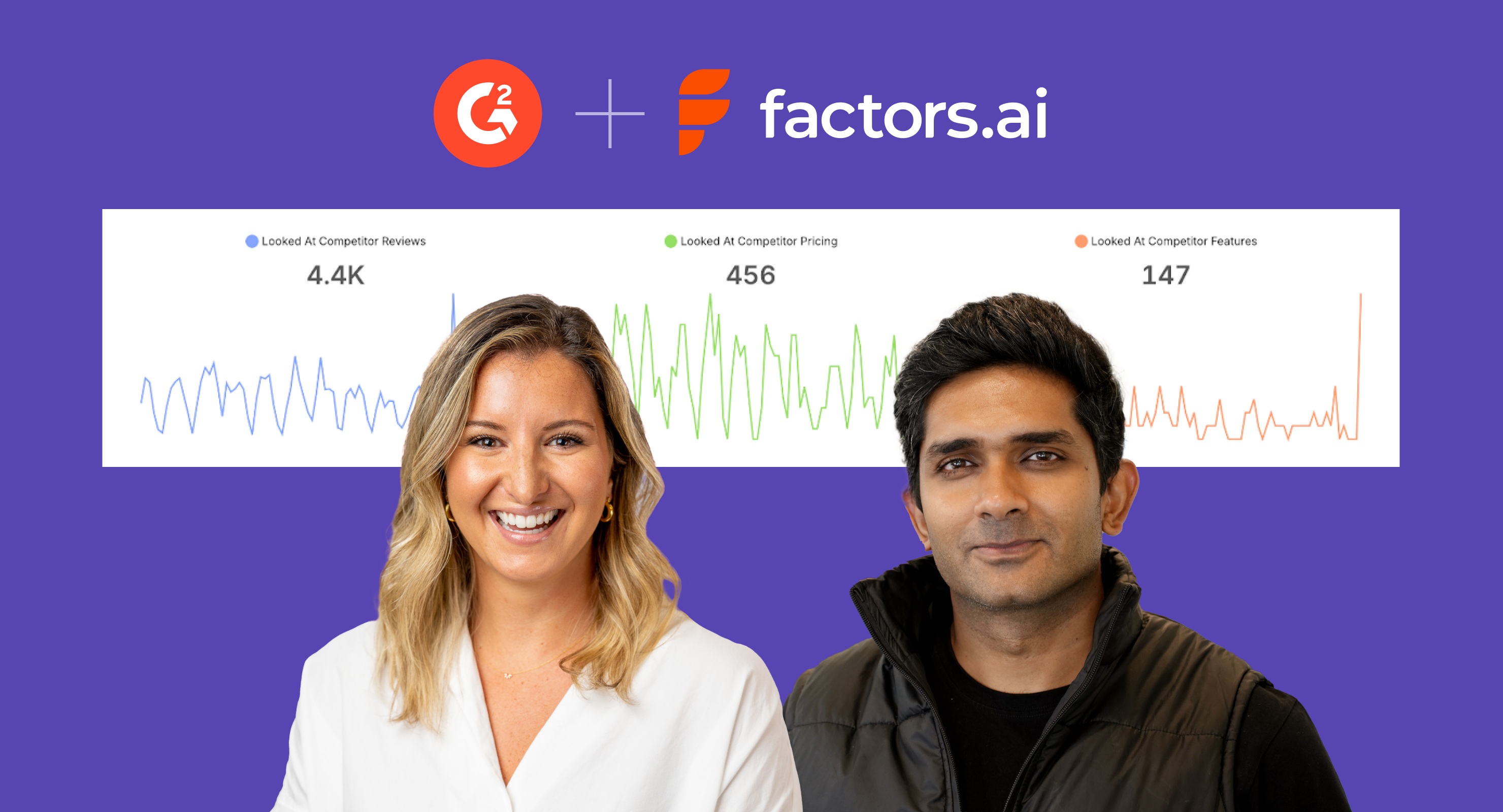Turning G2 Competitive Signals Into Real-Time Customer Success Action
Customer success (CS) teams have long relied on product usage, support tickets, and surveys to...
October 9, 2025
 by Rachel Gianfredi
by Rachel Gianfredi

Software buyers are researching, comparing, and making decisions based on the social proof and insights they find on G2. But what if these buyers never make it to your product profile to directly look at your features and pricing? Perhaps you’re new to G2, and there’s a competitor that has a stronger standing as a G2 Grid® Leader.
With G2’s newest Buyer Intent signal, buyer interest in your competitors can now help you spot risk and drive pipeline.
Our partners and customers at Factors.ai, an attribution platform that helps B2B marketers capture demand and measure ROI, recently conducted an analysis that revealed that these signals are not only a massive source of high-intent buyer signals for demand generation teams, but they’re also a great tool to get even more personalized in outreach messaging.
Factors.ai analyzed G2 signals across 50 mutual customers, and the results showed that the launch of G2’s competitive signals substantially increased overall Buyer Intent volume for products listed on G2. As a reminder, competitive intent signals are gathered from product profiles in a shared category with your product, including:
While signals from your own G2 product page remain valuable, the volume of activity on competitor pages is significantly higher, as it is collected from multiple products across G2.
Factors.ai compared competitive intent to product profile signal volume:

Consistently, more in-market buyers are actively researching your competitors than they are visiting your product page alone. Accessing these signals represents a massive, untapped opportunity to increase your signal volume and gain a larger audience to target. This expanded visibility from G2 provides clearer insights and an opportunity to get in front of buyers at the very moment they are evaluating solutions.
These signals provide a new lens for prioritizing your demand generation and sales efforts. While the volume on competitor pages is quite high, Factors.ai also found that conversion rates vary significantly based on the type of page visited.
Here’s how the signals stack up in terms of average conversion rate to inquiry (a form submission on your website) within 60 days:
Additional insights revealed that conversion rates also improve when selecting specific competitors’ or competitors’ signals, rather than all of them in a shared G2 category. Signals are usually triggered 20-30 days before conversion, so acting early can give you a competitive advantage.
The key takeaway for demand gen marketers is to think of these signals in two distinct groups:
So, how do you put this into action? Activating these signals in the available integrations will be your first step. Competitive Signals are now available in Slack, Salesforce, HubSpot, Demandbase, Snowflake, LinkedIn, and our APIs.
Here's a simple playbook to get started with putting these signals in the hands of your sales and marketing teams:
Bottom-of-the-funnel sales activities:
Middle-of-the-funnel demand gen campaigns:
By implementing this playbook, you can move beyond just tracking signals from your own products listed on G2.
You can start proactively engaging with accounts that are actively exploring solutions in your category and significantly increase your sourced pipeline to prove a greater ROI on your G2 investment.
Customer success (CS) teams have long relied on product usage, support tickets, and surveys to...
Sometimes it’s not about the data you collect, but what you do with it once you have it.
Looking for a crash course in all things G2 Buyer Intent?